The appeal of the northern lights draws visitors to Arctic Norway from all over the world. But how much do you know about this natural phenomenon? Learn more about the aurora with these fun northern lights facts.
Have you seen the northern lights? They dance high above our heads when the sky is dark, and draw many thousands of tourists to Norway.
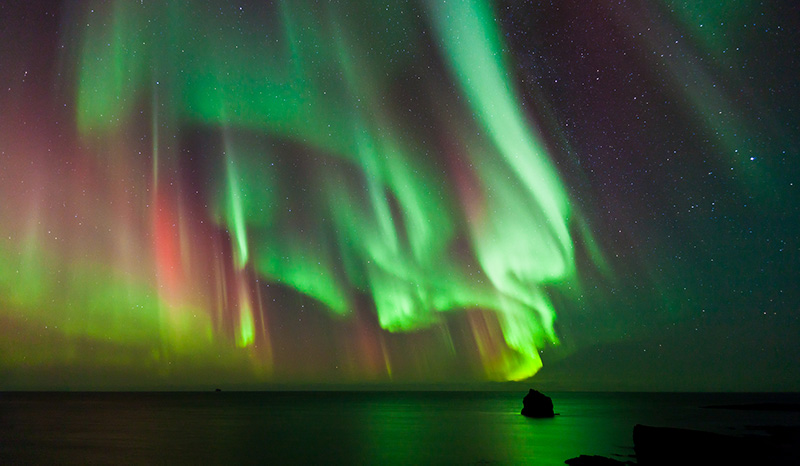
Some people are underwhelmed, others leave with a lifelong memory. Much depends on the strength of the display you see.
Having grown up in middle England, I never glimpsed the lights until I moved to Norway. All I had was a story from my mother, who glimpsed the aurora one night while wandering on a remote Scottish island beach with her grandfather.
Since moving to Norway I've managed to see the lights many times, including just a few days ago here in Trondheim! In my research for my Moon Norway guidebook, I spoke to many aurora experts and tour providers to learn more about this bizarre natural phenomenon.
So, if you're at all curious about the aurora borealis, join me and let's dive into these fascinating northern lights facts!
The mythology of the northern lights
Of course, we know today what causes the northern lights. But before we knew the science, it's understandable that our ancestors struggled to comprehend what they were seeing.
Many myths and legends around the world are associated with the northern lights, as indigenous people tried to make sense of what they saw.
1. The northern lights feature in Norse mythology
In Norse mythology, the aurora borealis was often interpreted as a reflection of battle and the afterlife.
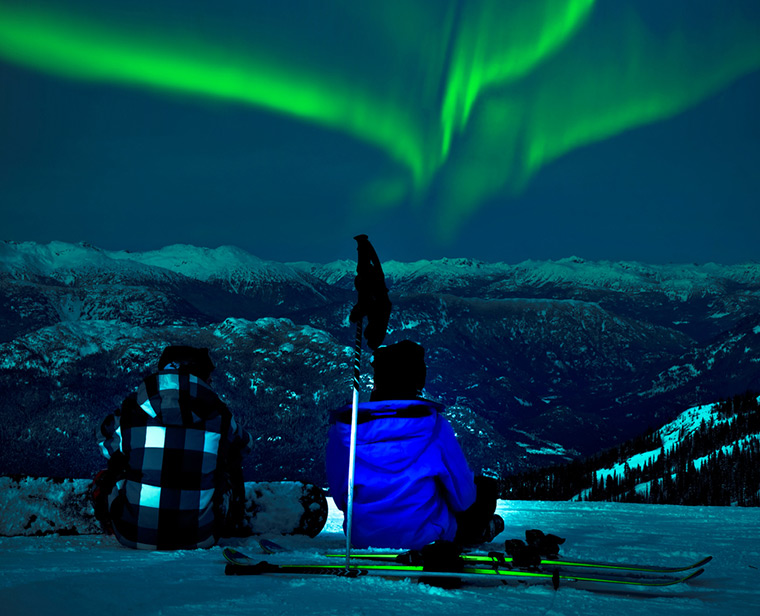
One legend describes the lights as the gleaming armour and shields of the Valkyries, the fierce female warriors who chose which fallen soldiers were worthy of entering Valhalla, Odin’s great hall.
As they rode across the night sky, their shining armour was said to cast the flickering green and crimson lights that dance above the northern horizon.
Some Norse tales even suggested that the aurora formed a bridge or archway into Valhalla itself, a celestial gateway through which the bravest souls would pass.
In a world where the night sky dominated the imagination, these lights symbolised both glory and mystery, and a reminder of the gods’ presence in the northern skies.
2. The northern lights play a part in Chinese dragon legends
Sightings of the aurora in China are extremely rare, as most of the country lies far south of the auroral zone.
But on those rare occasions when powerful solar storms pushed the lights far enough south to be visible, the spectacle must have been astonishing. Ancient observers, unfamiliar with the science behind the phenomenon, often sought meaning in what they saw.
It’s believed that some early Chinese dragon myths may have been inspired by these extraordinary displays. The glowing, serpentine forms of the lights were interpreted as dragons battling across the heavens as a clash between forces of good and evil, light and darkness.
In a culture where dragons symbolised power, luck, and cosmic balance, these fleeting appearances in the sky were taken as powerful omens, woven into the fabric of ancient Chinese storytelling.
3. Some Europeans saw the aurora as a harbinger of war
Not everyone associated the lights with gods or postivity. In fact, in the British Isles the skies were said to have ‘blazed red' just a few weeks before the French Revolution.
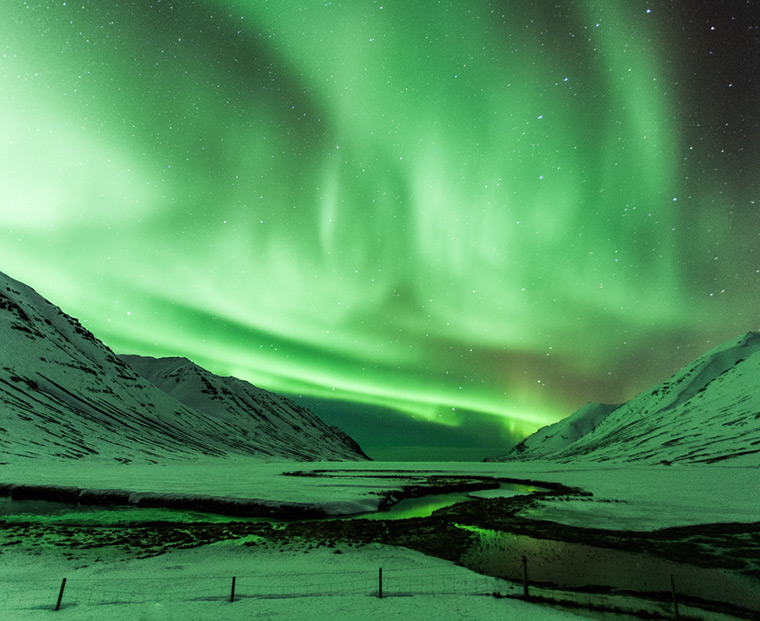
Meanwhile, in Italy and France the lights were believed to be a bad omen that could herald the outbreak of anything from war to plague. If you happen to see the lights, keep an eye on your health!
4. Japanese culture associates the aurora with luck
The aurora legends also include fertility! In Japanese culture for example, a child conceived during a northern lights display will be blessed with good looks, intellect and good fortune.
The science of the northern lights
While I'm fascinated by the myths and legends associated with the lights, I'm just as fascinated by the science. Now, let's take a look at what we know about the causes of this wonderful light show.
5. The northern lights are initially caused by the sun
Although the northern lights appear in Earth’s atmosphere, their story begins millions of kilometres away on the surface of the sun. There, violent eruptions known as coronal mass ejections (CMEs) blast vast clouds of charged particles into space.
These streams of plasma form what’s known as the solar wind, a constant flow of energy that travels across the solar system.
When a particularly strong burst of solar wind heads toward Earth, it can reach our planet within a few days. As these energetic particles interact with Earth’s magnetic field, they set the stage for one of nature’s most dazzling light shows.
6. An aurora display is actually a distortion in the earth's magnetic field
When the solar wind meets Earth’s magnetic field, it causes a ripple (or distortion) in the field’s shape. Most of the incoming particles are deflected harmlessly away into space, but some are funnelled down toward the magnetic poles, where the field lines converge.
As these charged particles collide with atoms and molecules in the upper atmosphere, they transfer energy to them. When those excited atoms return to their normal state, they release that energy as tiny bursts of light, or photons.
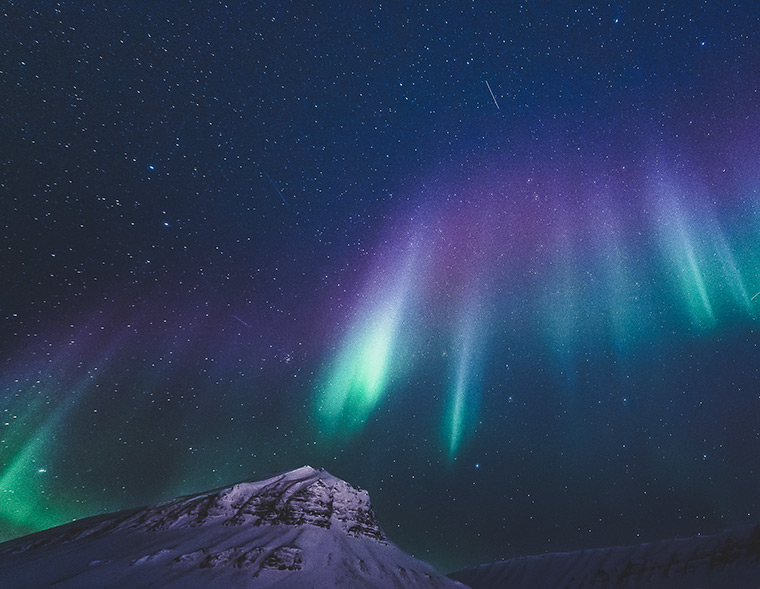
Multiply that process billions of times over, and you get the dancing ribbons and waves of colour that we call the aurora.
7. The northern lights occur around 100km above the earth
When you're watching an especially strong northern lights display, it can seem as if you could almost reach out and touch them. But in actual fact, the lights are high up in our planet's atmosphere.
How high? According to Norway's UiT, the lights are generally found between 90km and 130 km above ground level, although they can be even higher.
8. The northern lights are only visible when it's dark, but they can occur at any time
Contrary to what some people think, the aurora borealis can occur at any time of day. However, our eyes need darkness to be able to perceive them.
This means that the days around a full moon are not the best for hunting the lights. It also explains why it's best to get far away from the lights of towns and cities to maximise your chances of a sighting.
9. The lights occur in an oval-shaped band around the poles
Remember those charged particles that enter our atmosphere near the poles? From space, a northern lights display is often seen as an oval around the poles–and that's what you see on prediction software.
The auroral oval is fixed in a relation to the sun, while the earth revolves below. However, the stronger the charged particles, the farther away from the poles they enter the atmosphere, causing the oval to expand, and with it, the visibility range.
Read more: Surfing Under the Northern Lights
10. The best places to see a display change over time
The auroral oval relates to the magnetic poles and not the geographical poles. Magnetic poles move over time, taking the auroral ovals with them. While year-to-year changes are minor, over time they can be significant.
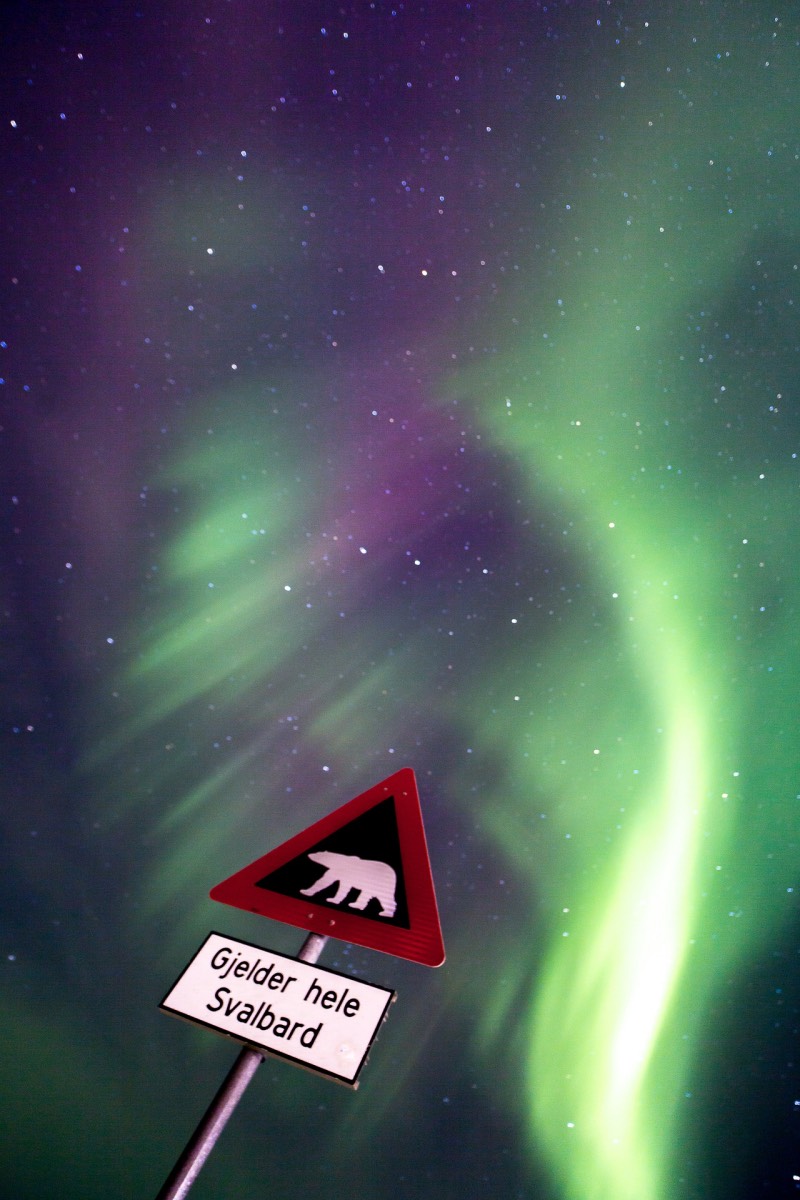
Experts believe that 500 years ago, the auroral oval was probably located over southern Norway. This means that while today is a great time to see the lights in northern Norway, that won't always be the case.
Other northern lights facts
Okay, enough science for now! Let's take a look at some other interesting info about the aurora borealis.
11. People study the northern lights for a living
Well, maybe we're not quite ready to leave science just yet! The study of the aurora borealis is a potential career for a budding scientist, albeit an extremely niche specialism. It's not a modern specialism, though!
Norwegian mathematician and astrophysicist Carl Størmer (1874–1957) studied the movement of charged particles in the magnetosphere. Scientist Kristian Birkeland was another early pioneer. He went on to receive seven Nobel Prize nominations.
In 1939, Norwegian physicist Lars Vegard proved hydrogen emissions in aurora borealis. Nine years later, he pointed out the doppler effect in hydrogen lines of aurora borealis.
12. The first aurora photograph was taken more than 125 years ago
It was German physicist and astronomer Otto Rudolf Martin Brendel (1862–1939) who took the first known photograph of the aurora borealis.
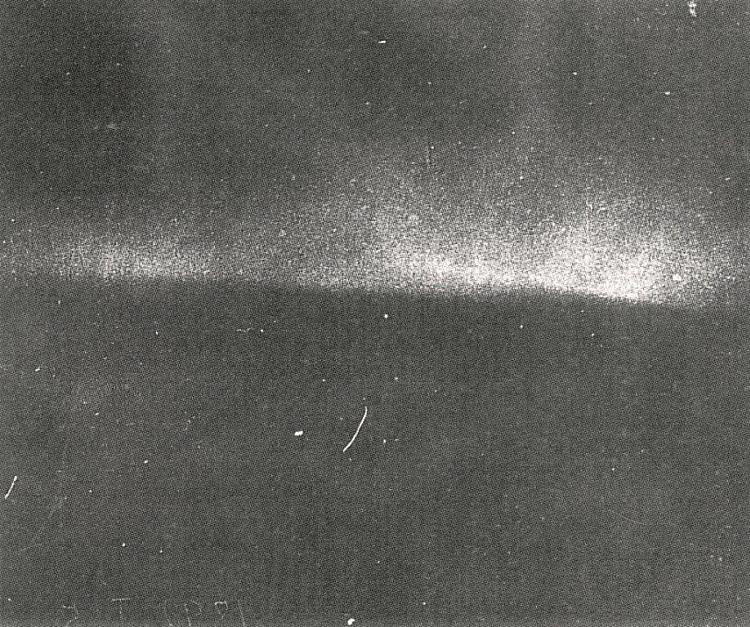
Taken on 5 January, 1892, the black-and-white photo was published in ‘The Century' magazine in October 1897.
13. The northern lights is big business for Norway
Many people know of northern lights tourism, but few appreciate the extent of the industry. Northern cities like Tromsø and Alta promote northern lights tours above anything else during the winter season.
According to a 2017 report from Innovation Norway, “northern lights” was behind only fjords and glaciers as search terms tourists used when looking for information on visiting Norway. The same report revealed that of all international tourists to Norway, 21% hoped to experience a northern lights display.
14. Norway has a church inspired by the northern lights
Such is its popularity as an aurora-spotting destination, northern Norway’s Alta proudly calls itself the “City of the Northern Lights.”
The natural phenomenon is woven into the town’s identity, and nowhere is that more evident than in its remarkable modern church. Known as the Northern Lights Cathedral, this spiralling structure of titanium panels was designed to reflect and mimic the shimmering movement of the aurora borealis.
Its twisting form seems to reach toward the sky, while the metallic surface glows in ever-changing hues under the Arctic light.
Inside, the atmosphere is equally striking. The interior is minimalist yet dramatic, designed to draw the eye upward, creating a sense of quiet awe that mirrors the feeling of seeing the aurora itself. Subtle lighting, textured walls, and artistic details all echo the theme of light in motion, inviting contemplation and calm.
Beneath the church, a fascinating exhibition offers a scientific and cultural perspective on the northern lights. The Northern Lights Exhibition, operated by the local museum, explains how the aurora forms through interactive displays, animations, and historic photographs.
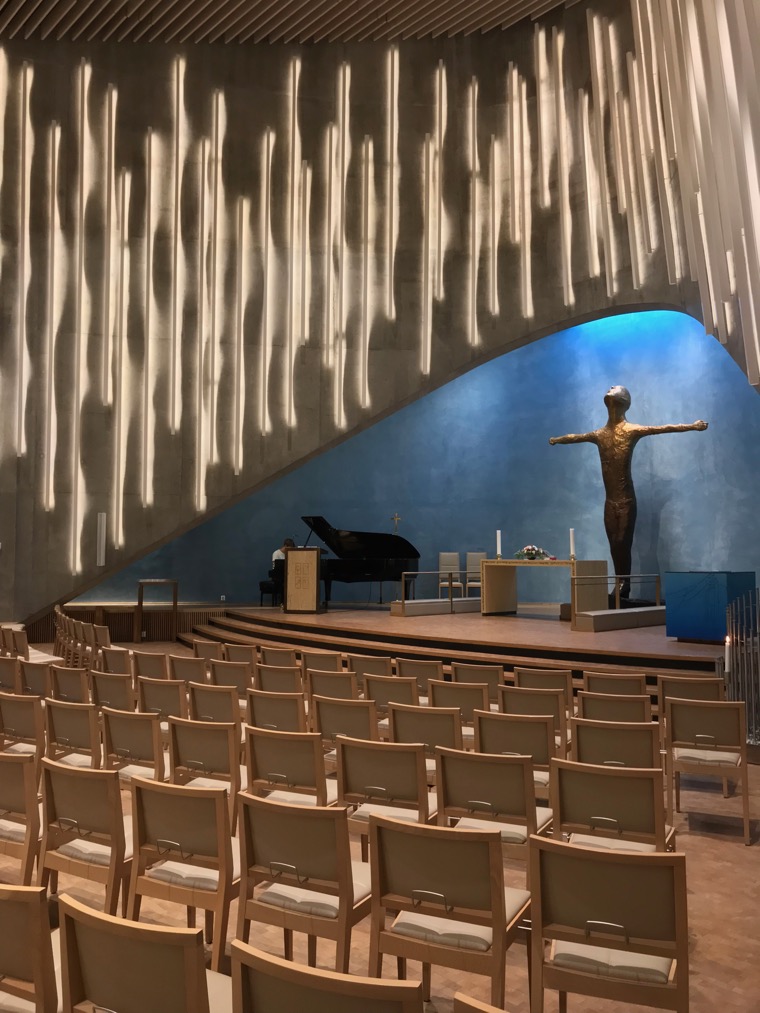
It also explores the mythology surrounding the lights, from ancient Sami beliefs to early scientific theories, showing how this celestial display has shaped Arctic culture for centuries.
15. The aurora australis are seen by far fewer people
Throughout this article, I've referred to the aurora borealis, or northern lights. But as mentioned earlier, the same phenomenon also occurs at the opposite end of the planet.
In the southern hemisphere, it’s known as the aurora australis, or southern lights. Because far fewer people live in the southern auroral zone, sightings of the aurora australis are comparatively rare.
The region includes only a handful of inhabited places, such as Tasmania, southern New Zealand, and parts of Antarctica. Even then, weather conditions, remoteness, and the long Antarctic winter make viewing opportunities much more limited than in the north.
Its isolation gives it an even more mysterious reputation, a natural wonder seen mostly by researchers, explorers, and a few adventurous travellers.
16. Other planets also have auroras
Auroras are not unique to Earth. In fact, they are a cosmic phenomenon that can occur anywhere a planet has a magnetic field strong enough to interact with charged particles from the sun.
Both Jupiter and Saturn, for example, have immense magnetic fields (far stronger than Earth’s!) and auroras have been observed on both gas giants. These displays were first detected by the Hubble Space Telescope and later studied in greater detail by the Cassini and Galileo spacecraft.
On Saturn, the process appears similar to Earth’s, with the solar wind colliding with the planet’s magnetic field and energising particles that glow in ultraviolet light. Jupiter’s auroras, however, are far more complex.
They are not only influenced by the solar wind but also by the planet’s own rotation and its volcanic moon Io, which spews out charged particles that feed Jupiter’s magnetic environment.
The result is a set of brilliant, persistent auroral ovals that burn constantly around the poles. It's far more powerful than anything ever seen on Earth.
17. You can photograph the lights with a modern smartphone
When I first saw the lights, a decent DSLR camera was required to stand a chance of capturing the lights on film. But technology moves quickly.
When the lights danced above Trondheim back in 2020, I was able to capture them using my iPhone XS. The photo wasn’t great, but given that I took the photo from inside my bathroom, I was thrilled with it.
Fast forward to 2025, and I now take fantastic pictures of the aurora with my iPhone 16 Pro. Nighttime photography capability has moved on leaps and bounds with the latest phones, and you can do so much with them.
Have you ever seen the northern lights? How was the experience for you? Let us know in the comments.


Great article! At what time and day did they appear in Trondheim? I live in Trondheim as well and went to Kuhaugen last Monday to see them (lots of activity according to nordlysvarsel.com). No luck though!
There’s never any guarantees in Trondheim even with good forecasts, unfortunately! The picture I took was a few days before that on the Thursday, at around 10.40pm.
Wow so petty
I live in New York State. The Northern lights are visible at times. I am in an area known as Upstate. I was pumping gas early one morning and the lights were in the sky swirling around. I really enjoyed watching them. Another time was on a back road, and it was dark. It was fun to watch them again. I love to see them.
You did not talk about the variation in color of the Northern Lights. For 20 years I lived in SW Iowa in the USA. One evening coming home from working at my school, I watches as the Northern Lights had both green and red. Almost had an accident as I was so fascinated by the color change between the green and red !
I would love to see the northern lights… I live in Alabama though and Iceland and Alaska are a little too far for me and my parents to travel though… But the pictures I have seen are beautiful! <3
It is beautiful! You need to see it, the camera does no justice!
Hi, I am curious, have the Northern Lights become more frequent and more of a ‘thing’, I lived in Northern Norway (Vesteralen) for a year as an exchange student in 1985/86 and although I knew of them there was no particular interest or great photography. Has it changed? Thanks